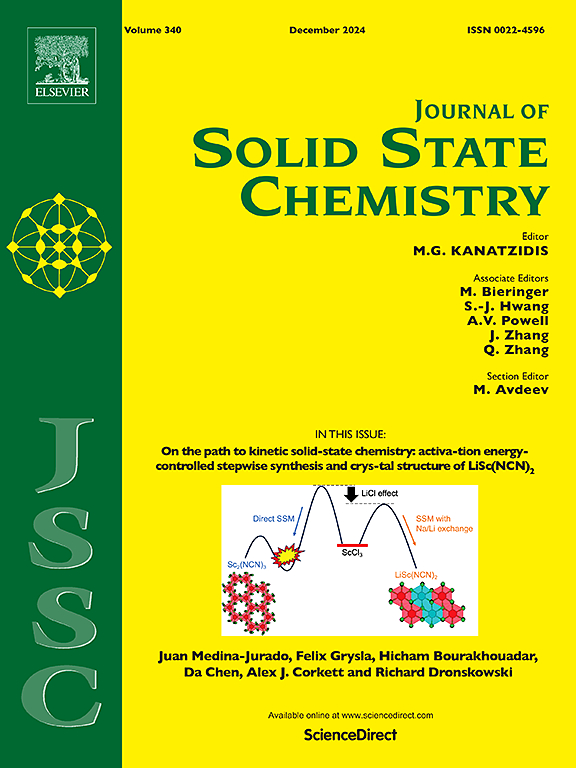Synthesis, structural, optical and radiation shielding properties: Of (7)AgNO3-(48)B2O3-(15)Li2O3-(30-X)TeO2 - xMoO3: Impact of MoO3-Modified borotellurite glasses
IF 3.2
3区 化学
Q2 CHEMISTRY, INORGANIC & NUCLEAR
引用次数: 0
Abstract
This work explores the development and characterisation of a new glass system, (7)Ag2O-(48)B2O3-(15)Li2CO3-(30-x)TeO2-(x)MoO3, with variable MoO3 molar concentrations (0–20 mol%). The glasses were produced using the melt-quenching process, and their structural, optical, and radiation shielding capabilities were thoroughly investigated. X-ray diffraction approved the materials' amorphous structure, while Raman spectroscopy provided extensive information on their vibrational characteristics. The Raman analysis revealed characteristic bands corresponding to TeO3, TeO4, and MoO6 units, with notable changes in band intensity and the emergence of a 900 cm−1 band as the MoO3 content increased, indicating structural modifications in the glass matrix. Optical measurements showed significant effects of MoO3 on the glasses' behavior. A red-shift in the cut-off wavelength from 390 nm for ABLTM0 to 420 nm for ABLTM20 was observed, alongside a non-linear decrease in the optical bandgap energy from 2.67 eV to 2.60 eV. These trends were linked to the formation of non-bridging oxygens and disruptions in the glass network caused by the incorporation of MoO3 as a network modifier. The refractive index and optical basicity increased slightly with MoO3 concentration, which improved the glasses' polarizability. Additional parameters such as dielectric constant, molar refraction, and optical electronegativity were also examined to provide a detailed understanding of the optical properties. The radiation shielding properties of the glasses were evaluated in terms of mass attenuation coefficients (MAC), half-value layers (HVL), and fast neutron removal cross-sections (FNRCS). The results showed that the glass samples had high MAC values at lower gamma-ray energies, meaning they effectively attenuated radiation. However, their effectiveness decreased at higher energies due to scattering effects. Notably, ABLTM20 demonstrated the best neutron shielding performance, achieving an FNRCS value of 0.106 cm−1, outperforming conventional shielding materials like concrete and water. These findings underscore the potential of this glass system for advanced applications in medical imaging, nuclear safety, and radiation shielding technologies.

求助全文
约1分钟内获得全文
求助全文
来源期刊

Journal of Solid State Chemistry
化学-无机化学与核化学
CiteScore
6.00
自引率
9.10%
发文量
848
审稿时长
25 days
期刊介绍:
Covering major developments in the field of solid state chemistry and related areas such as ceramics and amorphous materials, the Journal of Solid State Chemistry features studies of chemical, structural, thermodynamic, electronic, magnetic, and optical properties and processes in solids.
 求助内容:
求助内容: 应助结果提醒方式:
应助结果提醒方式:


